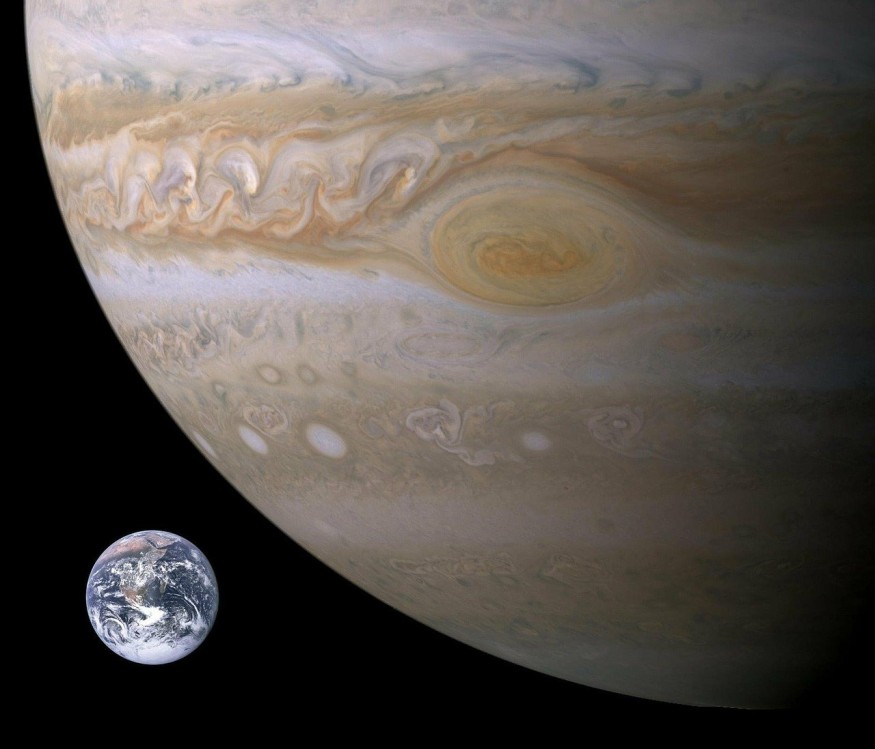
Researchers from NASA's Goddard Space Flight Center have confirmed traces of water vapor above the surface of Jupiter's icy moon Europa. That's a big deal as the little space rock is one of the top priority targets in NASA's search for extraterrestrial life, according to the agency.
"While [experts] have not yet [directly identified the] liquid water, we've found the next best thing: water in vapor form," lead researcher and NASA planetary scientist Lucas Paganini said in a NASA statement.
The NASA team, according to a paper published in the journal Nature Astronomy on Monday, discovered enough water vapor being discharged from Europa to fill an Olympic-size swimming pool within minutes. It was only just sufficient enough to be detected from Earth.
The scientists only spotted water vapor in one out of 17 observations by the W. M. Keck Observatory in Hawaii, which utilizes a spectrograph to identify the biochemical compositions of other planets' atmospheres by scanning the infrared radiation they release or absorb.
Paganini and his team suggested that the outgassing of water vapor on Europa occurs at lower levels than previously estimated, with only rare localized cases of stronger activity.
Scientists have suspected the presence of water on Europa's surface
The scientists, for many years, suspected the presence of water on Europa's surface, and several observations appear to back up that suspicion. NASA's Galileo spacecraft detected signs of an electrically conductive vapor on the moon's surface more than two decades ago.
The data found evidence of massive plumes of liquid in a study in 2018. Data previously obtained by NASA's Hubble Space Telescope supported the presence of the plumes.
"We [made] diligent [security] checks to [eliminate potential] contaminants in ground-based investigations," Goddard planetary scientist Avi Mandell said of the water vapor discovery in the statement.
Eventually, the researchers would have to get closer to Europa to see what's going on. A new mission to do just that is already lined up.
NASA's forthcoming Europa Clipper mission will get a much closer look at the Jupiter's icy moon's surface by 2023. The spacecraft would feature a suite of spectrometers, radar, and cameras to investigate the thickness of Europa's icy shell during the 45 flybys.
How Europa Could Serve as Earth's Substitute
Research proposing the likelihood of an ocean on Europa was issued as early as 1977 after the Voyager mission saw long lines and dark spots instead of a cratered surface related to other moons. Galileo spacecraft approached Europa in 1996 and discovered an ocean on another planet for the first time.
Margaret Kivelson, professor emerita of space physics at the University of California, Los Angeles, Galileo collected signatures of developments in Europa's magnetic field that the scientists didn't understand during its closest flyby in Europa in 1997, less than 93 miles above the surface.
Kivelson and her colleagues took a closer look at the obtained data last year. Galileo flew through a plume - a burst of liquid from Europa's ocean that pierces through the moon's icy shell - during the flyby. Their study's accidental event is the best evidence of plumes to date.
Paganini noted the necessary ingredients for life - including energy sources, liquid water, and chemicals such as oxygen, phosphorus, hydrogen, carbon, nitrogen, and sulfur.
Jupiter's Europa and Saturn's moon Enceladus reveals some of these critical ingredients in their oceans, which is why researchers consider these are the best opportunities for finding life beyond Earth in our solar system.
Europa has been a high priority for scientists because, as an ice-covered moon with a subsurface salty liquid ocean, it has been identified as one of the ideal spots for hosting life.
© 2025 NatureWorldNews.com All rights reserved. Do not reproduce without permission.





